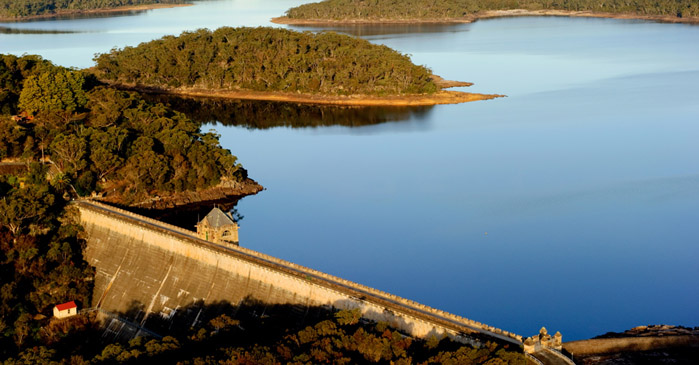
Playing golf in a charity day last week, the conversation in the group eventually got around to the level one water restrictions we are about to have foisted on us and the drought generally.
It was interesting that four different people from different walks of life agreed on two key points.
One was that this one was a serious drought that will test us.
The second was a lament that while Sydney’s population has grown to well over five million people – and counting – water storage is the same as it was more than 50 years ago.
Sorry, there was a third point we all agreed on, and it was that while not one new dam was built for Sydney in the past 50 years, the previous [Labor] State Government had the foresight to build a desalination plant, (pictured below) which is capable of providing Sydney with about 15 percent of its water needs.

But back to the population factor, which is without doubt the elephant in the room, so to speak.
Fifty years ago the population of Sydney was a little over two million people, so let’s do the maths because the numbers rarely lie.
Right here, right now, in 2019, the same amount of water stored in Warragamba and several other dams dotted around the metropolitan area, has to be shared by three million more people than in 1960.
The same amount of water supply, but three million more people cooking with it, drinking it, showering in it, flushing the dunny with it; all the things human beings need water for.
It does point to the usual lack of planning from the bureaucrats and the politicians of the last few decades.
But putting that aside as being in the past, the point is, what are we going to do to prepare for the next big drought in 50 or 100 years, especially if Sydney by then has a population of 10-12 million people?
It’s doubtful governments will look to building new dams or another super expensive desalination plant, given it would easily top $2 billion.
Mind you, they are currently spending more than $2 billion on sporting venues and nobody would argue footy is more important than water.
What we need is a new system of democracy whereby voters have a real say in where public money is spent on.
Under such a system taxpayers could nominate a top five of where they would like their hard earned money to be spent.
I have no doubt “bigger water supply’’ would be somewhere near the top of the list every time.
And if governments were required by law to adopt such lists in their priorities, well, we may be on the way to being an even greater country.
On the other hand maybe it’s all just a pipe dream and it would never happen.
